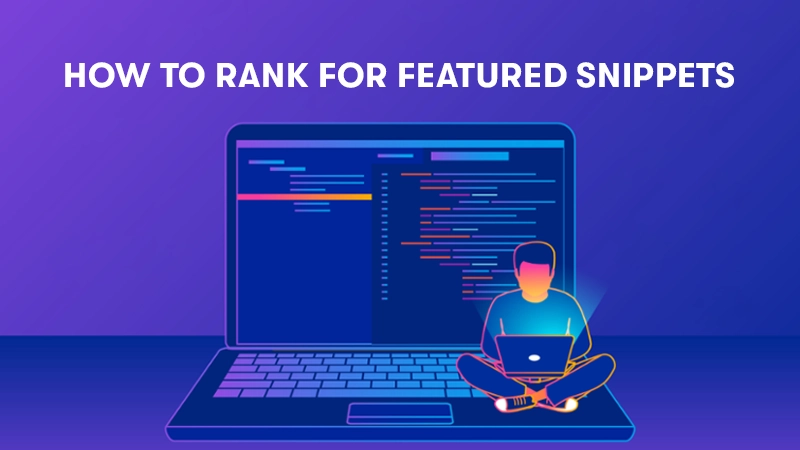
In the competitive world of SEO, ranking in the coveted featured snippet spot. the box that appears at the top of Google search results is a game-changer for increasing visibility and driving organic traffic. Featured snippets are designed to provide users with direct answers to their queries, making them a highly valuable position to target. If you’re looking to secure this top spot, here’s a step-by-step guide to help you rank for featured snippets.
Understand What Featured Snippets Are
Featured snippets, often referred to as “position zero,” are blocks of content that appear above the standard search results in Google. These snippets aim to answer a user’s query instantly, providing a concise summary of the information they’re looking for. There are various types of featured snippets:
- Paragraph snippets: A brief text that answers the question directly.
- List snippets: Ordered or unordered lists that break down steps or items.
- Table snippets: A tabular format showcasing key data or comparisons.
- Video snippets: Embedded YouTube videos that provide answers.
Target Questions People Are Asking
Google’s featured snippets primarily focus on answering questions. Start by researching which questions your target audience is asking related to your industry or niche. Use keyword research tools like Answer the Public, SEMrush, or Ahrefs to find common queries. Look for “question-type” keywords like “how,” “what,” “why,” “when,” and “best,” as these are likely to trigger featured snippets.
Optimize Your Content for Snippet Intent
Once you’ve identified the questions you want to target, create content specifically designed to answer them. Google pulls content that directly addresses the query, so structure your content with clarity and conciseness. Here are some tips for optimizing:
- Answer the question early: Place your answer at the top of the page, ideally within the first 100-150 words.
- Use clear headings and subheadings: Break your content into digestible sections using H2, H3 tags.
- Keep it concise: Google prefers brief, to-the-point answers. For paragraph snippets, aim for 40-50 words. For lists, break your points into short, easy-to-understand items.
- Provide well-structured data: For table snippets, organize your data in a clear, logical table format that’s easy to understand.
Format Your Content for Snippet-Friendly Results
- Paragraph Snippets: Answer the query in a clear, concise paragraph. Avoid fluff and ensure that your response is easy to read.
- List Snippets: Use numbered or bulleted lists. Break down steps, processes, or features to make your content stand out.
- Table Snippets: For comparison-based queries, structure your content with well-formatted tables that allow users to quickly digest the information.
- Videos: For video snippets, embed YouTube videos with a clear title that matches the search query and includes relevant keywords.
Use Structured Data (Schema Markup)
Structured data helps Google understand the context of your content better. By using schema markup, you can provide additional context about the type of content you're presenting, which may improve your chances of appearing in a featured snippet. Mark up your content using Schema.org’s formats for FAQ, How-to, and other relevant structured data types.
Create High-Quality, Authoritative Content
While optimizing for featured snippets is important, you can’t overlook the core principle of SEO: high-quality, authoritative content. Google prioritizes content that is well-researched, accurate, and valuable to users. Ensure that your content is thorough, addresses user intent, and provides real value. Citations, data-backed claims, and expert opinions help establish authority in your field, which Google rewards with higher rankings.
Monitor Your Featured Snippet Performance
Once you've optimized your content for featured snippets, track your progress. Use tools like Google Search Console or SEMrush to monitor your ranking for featured snippets. Check which queries are triggering your snippets and make adjustments to improve their visibility. If you're not seeing results, tweak your content by adding more depth, revising answers, or using alternative formats.
Improve Existing Content
Not every piece of content is born to rank for a featured snippet. However, you can improve existing content by revisiting older articles and optimizing them for snippet visibility. Look at pages that are already ranking on the first page for target queries and reformat your content to answer the question more directly and clearly.
Analyze Competitors
Take a look at who is currently ranking for the featured snippet and analyze their content. What type of format are they using? How concise is their answer? What kind of resources are they linking to? This research will help you understand what works and how you can enhance your content to outperform your competition.

Ranking for a featured snippet is not an overnight achievement, but with the right strategy, it’s definitely within reach. By optimizing your content for searcher intent, structuring your content correctly, and providing authoritative, high-quality information, you can increase your chances of securing the featured snippet spot. Remember to stay consistent, monitor performance, and adapt to evolving SEO trends to maintain and grow your position.
